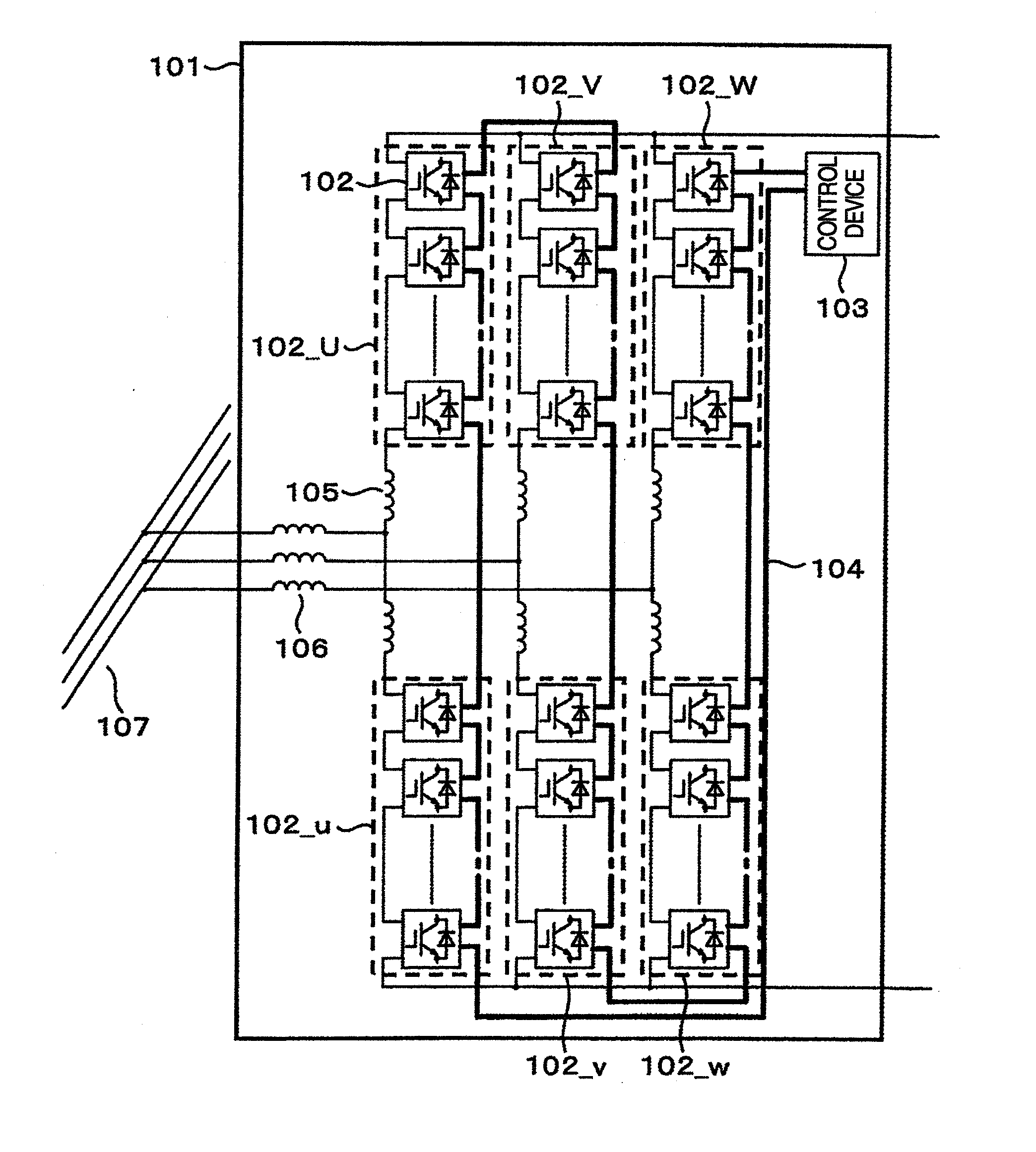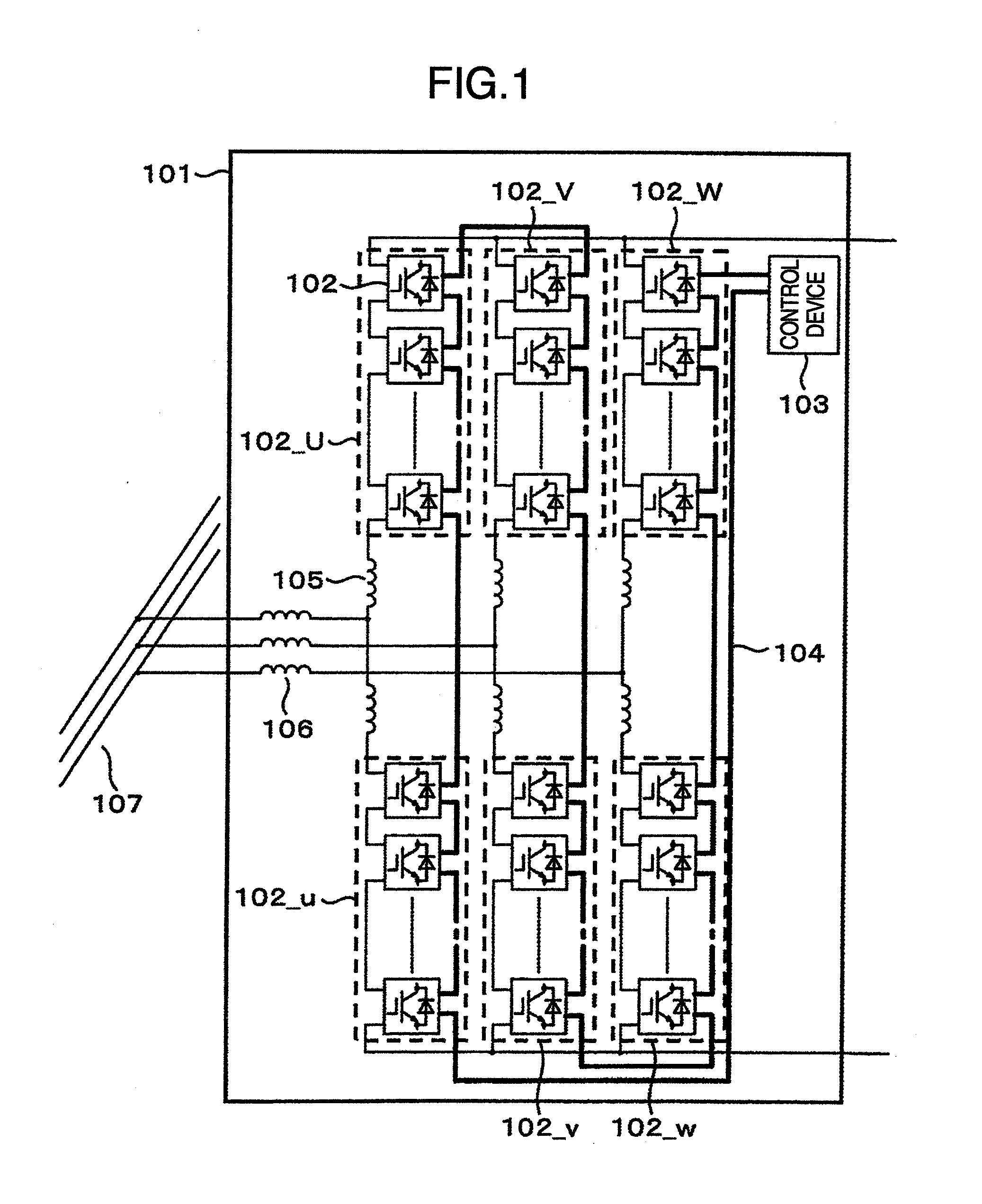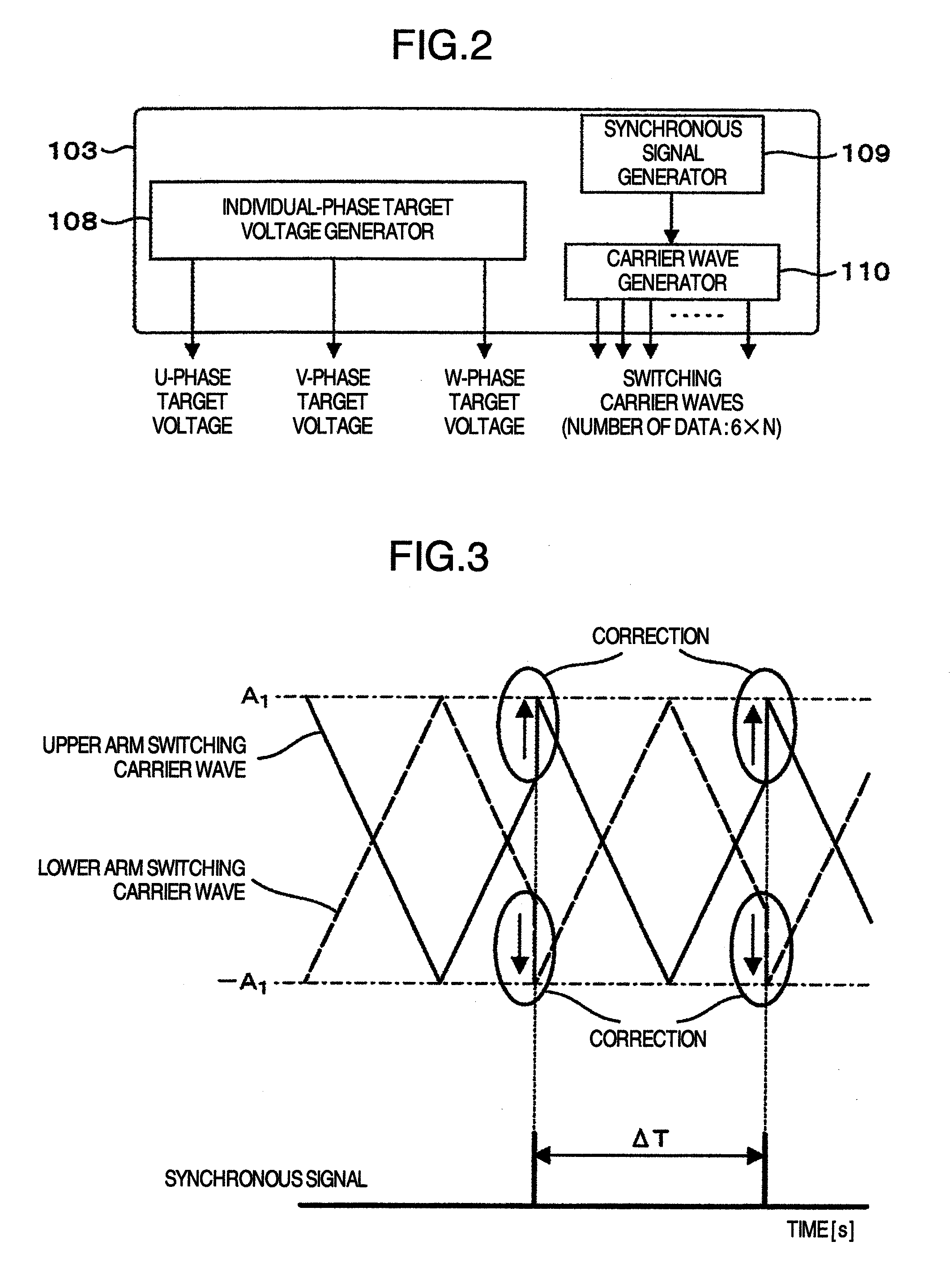Power converter
a power converter and converter technology, applied in the field of power converters, can solve the problems of increasing the weight and volume of the apparatus, becoming noise sources, and a big problem to solve, and achieve the effect of increasing the weight and volume of the apparatus
- Summary
- Abstract
- Description
- Claims
- Application Information
AI Technical Summary
Benefits of technology
Problems solved by technology
Method used
Image
Examples
embodiment 1
[0046]FIG. 1 is a configuration view of a power converter having converter cells cascade connected and in a state linked with a system 107 according to one embodiment of the invention. A power converter 101 comprises converter cells 102, a control device 103, a signal line 104 for transmitting control signals from the control device 103 to the individual converter cells, buffer reactors 105, and interconnected reactors 106. In the drawing, 102_U, 102_V, 102_W, 102—u, 102—v and 102—w have the plural converter cells 102 connected in cascade and are defined as arms. Thus, the upper arms 102_U, 102_V and 102_W are called a U-phase positive side arm, a V-phase positive side arm and a W-phase positive side arm, and the lower arms 102—u, 102—v and 102—w are called a U-phase negative side arm, a V-phase negative side arm and a W-phase negative side arm. And, the converter cells 102 and the control device 103 are connected in a row by the signal line 104 as shown in FIG. 1.
[0047]FIG. 2 shows...
embodiment 2
[0055]In Embodiment 1 described above, the converter cells 102 are configured of a so-called half bridge type circuit as shown in FIG. 4, but they may be configured of a full bridge type circuit as shown in FIG. 9. In the drawing, 111_A designates an IGBT element 111a and an IGBT element 111b, and 111_B designates an IGBT element 111c and an IGBT element 111d. When 111_A and 111_B are defined as legs respectively, the converter cell 102 in this embodiment is configured of a cell 114, which comprises the legs 111_A and 111_B each having two IGBT elements 111, a DC capacitor 112 and four fuses 113, a converter cell control circuit 115, a gate driver 116, a self-feeding supply 117 and a gate power supply 118.
[0056]FIG. 10 shows a schematic configuration view of the control device 103 in this embodiment. In the full bridge type circuit of this embodiment, the above-described legs 111_A and 111_B control the switching operation according to two types of target voltages which are called a...
embodiment 3
[0059]In Embodiments 1 and 2, the outputs of the control device 103 are the target voltages of each of the U-phase, the V-phase and the W-phase and the carrier waves of the converter cells but may be individual-phase target voltages and synchronous signals.
[0060]FIG. 13 shows a schematic configuration view of the control device 103 when the converter cell 102 is configured of a half bridge type circuit, and FIG. 14 shows a schematic configuration view of the converter cell control circuit 115. In this embodiment, the synchronous signal is outputted to the appropriate converter cell control circuit 115 at the every given time ΔT. And, in the converter cell control circuit 115, the carrier wave outputted from the carrier wave generator 110, which forcefully corrects a value by the synchronous signal inputted at every cycle ΔT, is compared with the target voltage outputted from the control device 103 for the magnitude by the comparator 119, and the ON / OFF signal is outputted to the gat...
PUM
 Login to View More
Login to View More Abstract
Description
Claims
Application Information
 Login to View More
Login to View More - R&D
- Intellectual Property
- Life Sciences
- Materials
- Tech Scout
- Unparalleled Data Quality
- Higher Quality Content
- 60% Fewer Hallucinations
Browse by: Latest US Patents, China's latest patents, Technical Efficacy Thesaurus, Application Domain, Technology Topic, Popular Technical Reports.
© 2025 PatSnap. All rights reserved.Legal|Privacy policy|Modern Slavery Act Transparency Statement|Sitemap|About US| Contact US: help@patsnap.com



